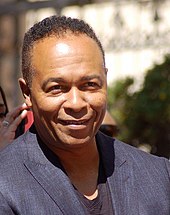WARNING: The following review might contain spoilers. Watch the movie before reading this review.
Hello and welcome to part 2 of my retrospective on Ghostbusters. Previously, I talked about the film's tumultuous production history, now I discuss how the movie is a solid mix of comedy and special effects regardless of any issues I have.
Ghostbusters have come out when the rise of summer popcorn movies was in full swing after Jaws and Star Wars, but I don't think the general public had high expectations for another big budget special effects driven comedy.
Steven Spielberg made his 1979 WWII comedy 1941, and that movie was a critical and commercial dud because that movie prioritized special effects and not much else, so that movie was a bloated mess.
Director Ivan Reitman has made two successful comedies (Meatballs, Stripes) with smaller budgets, so he took a huge risk by jumping on to a big scale production. But thankfully, any doubts the public might have had were put to rest when they finally saw it.
Audiences were given a big budget special effects-driven comedy with characters they cared about. The film's core strength, to me, is that the Ghostbusters were given individual personalities. This is why I think Roger Ebert's review is valid when he said that the special effects serve the actors and not the other way around. They really develop a strong team with their interactions instead of being props for the special effects.
Reitman made the right decision to tell an origin story instead of throwing the audience into the action. Aykroyd's original idea was to set the movie into the future and the Ghostbusters were already in business, but Reitman felt that it was too bloated. So Reitman basically rewrote Aykroyd's concept into an origin story and set it in modern times, which I think benefits it greatly.
While nobody gives a bad performance, Bill Murray really steals the show as Peter Venkman. Not only he gives joy with his clever one-liners, there are moments when he actually gets serious with the role, such as the scene when the EPA tries to shut down the Ghostbusters headquarters and Venkman protests. It's scenes like this that show Murray's versatility as an actor.
Obviously, the movie is not perfect, as it has its flaws here and there. Some of the initial reviews at the time pointed out that the supporting characters were given little to do. It's not a criticism I necessarily agree with, but I can understand where they are coming from.
Even though I credited the individual personalities of the Ghostbusters and their interactions, it's not always easy for me to remember what the supporting cast did or said that I find funny, since Murray dominated most of the comedy with his improvisations and ad-libs while Aykroyd and Ramis played their roles somewhat straight. Still, there still some funny moments from them, such as when Aykroyd thought about the Stay Puft Marshmallow Man in the film's climax, and when Rick Moranis gets possessed by one of the terror dogs.
The romance with Venkman and Dana Barret feels rushed. She's clearly not interested in him at all when they first meet and only shows interest in him when he becomes famous. Sure, she kisses him after he saves her, but since there wasn't enough time to establish their relationship, I honestly don't buy the chemistry between Murray and Weaver.
Another issue I have is the abrupt arrival of Winston, the fourth Ghostbuster. He kind of does feel tacked on in the second act without even giving us a proper backstory, so we really don't know much about him. As I said in part 1, originally there was much more to Winston when Ernie Hudson read the script, but when filming started, much of his character was omitted.
And lastly, the special effects are mixed in quality. Because of the short production schedule, many effects shots looked rushed, from wobbly blue screen composites, to stiff stop motion animation. The best effects for me were the Ghostly Librarian, Slimer, and Stay Puft Marshmallow Man, and I liked some of the matte paintings and traditional animation. But the stop motion animation of the Terror Dogs disappoint. They just look stiff and poorly processed in the optical printer.
I think the issues I've mentioned might have been the result of the studio rushing the production to meet it's summer 1984 deadline, because by doing that, it kind of does come across like they were trying to capitalize on the rise of the summer blockbusters, since it was a new concept that was established by Jaws and Star Wars.
Despite it's faults, I still think Ghostbusters is a solid film. Mixing comedy and special effects is not easy, as 1941 obviously demonstrated, but the filmmakers did the best they could under a tight schedule to make a solid movie despite its faults. Ghostbusters is a 3.5 out of 4 movie for me.
_theatrical_poster.png/220px-Ghostbusters_(1984)_theatrical_poster.png)


.jpg/170px-Labor_Day_20_(9766111984).jpg)

.jpg/250px-Peter_Venkman_(Bill_Murray).jpg)
.jpg/220px-Ray_Stantz_(Dan_Aykroyd).jpg)

.jpg)


.jpg/220px-Annie_Potts%2C_2019_(T6I0YV6Az8c).jpg)

.png/250px-The_Ghost_Busters_-_1975_TV_series_(logo).png)







.jpg/250px-Paramount_Pictures_logo_(2010).jpg)



.svg/220px-Industrial_Light_%26_Magic_(logo).svg.png)



